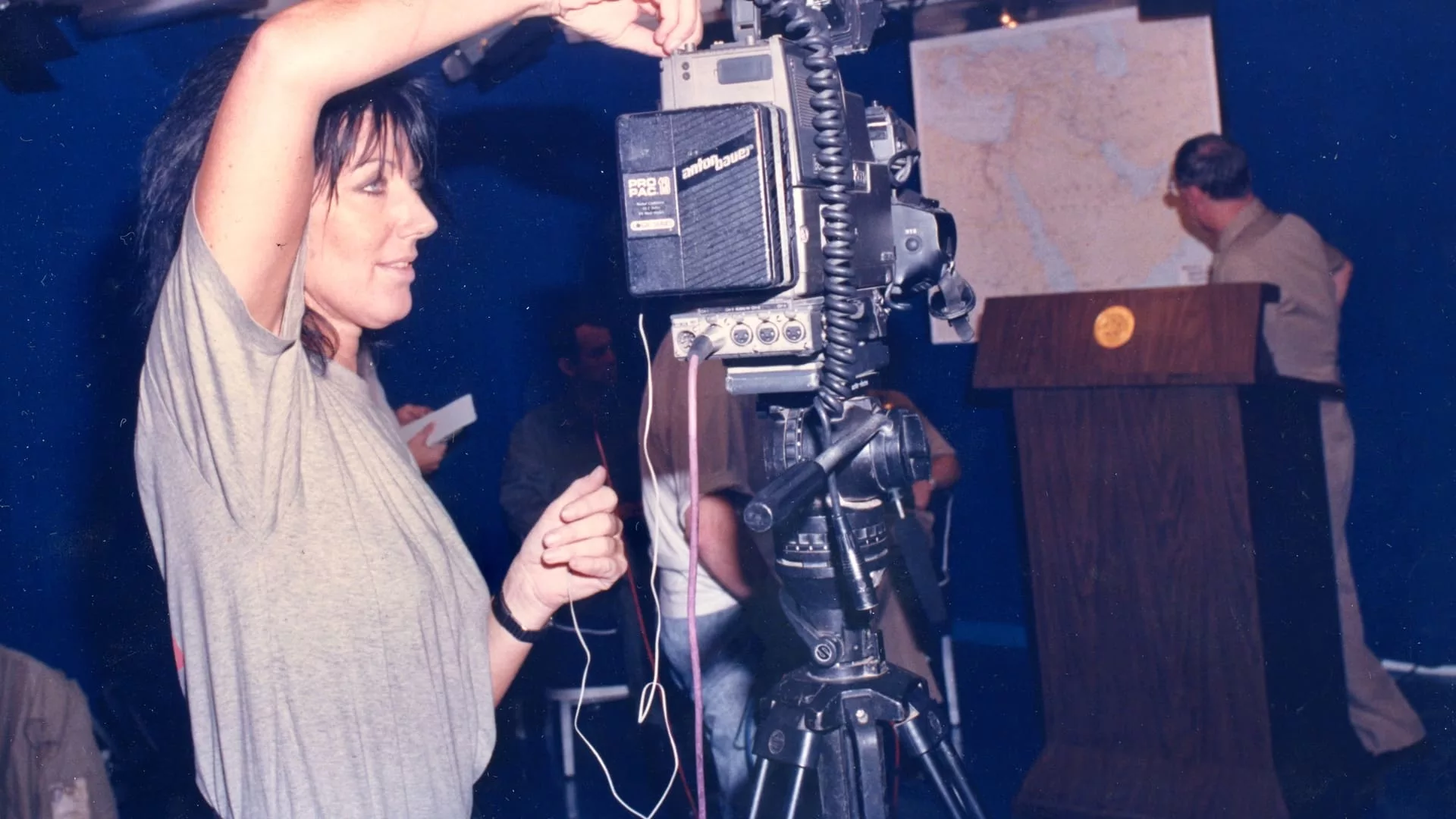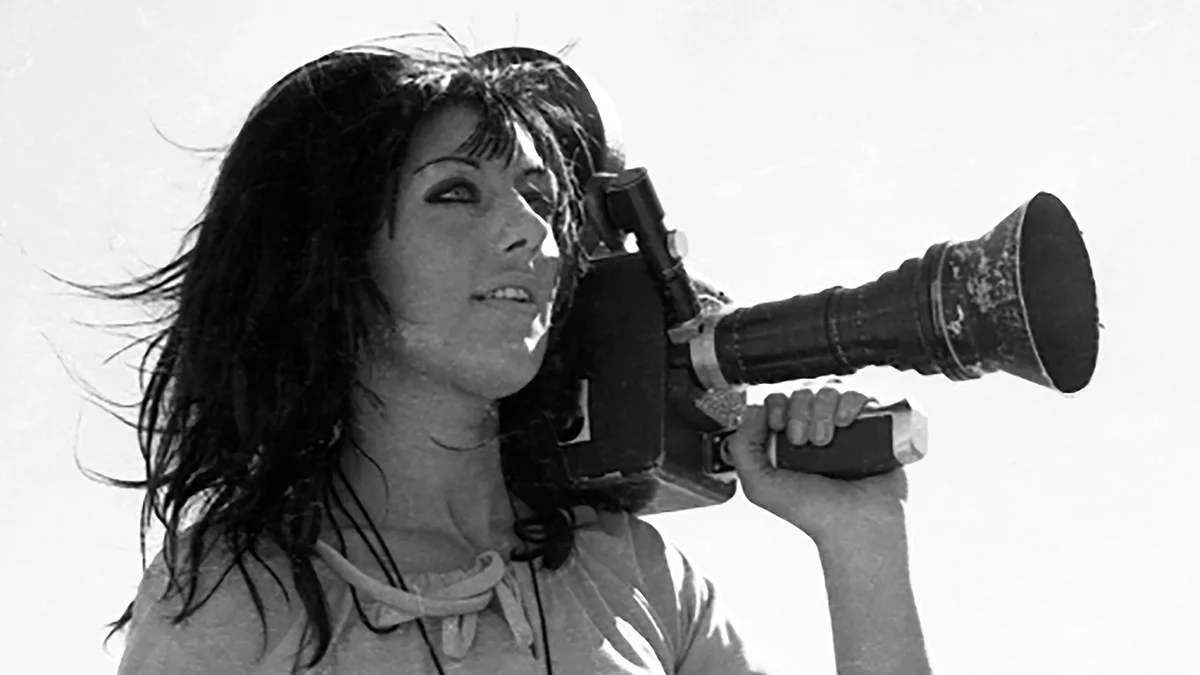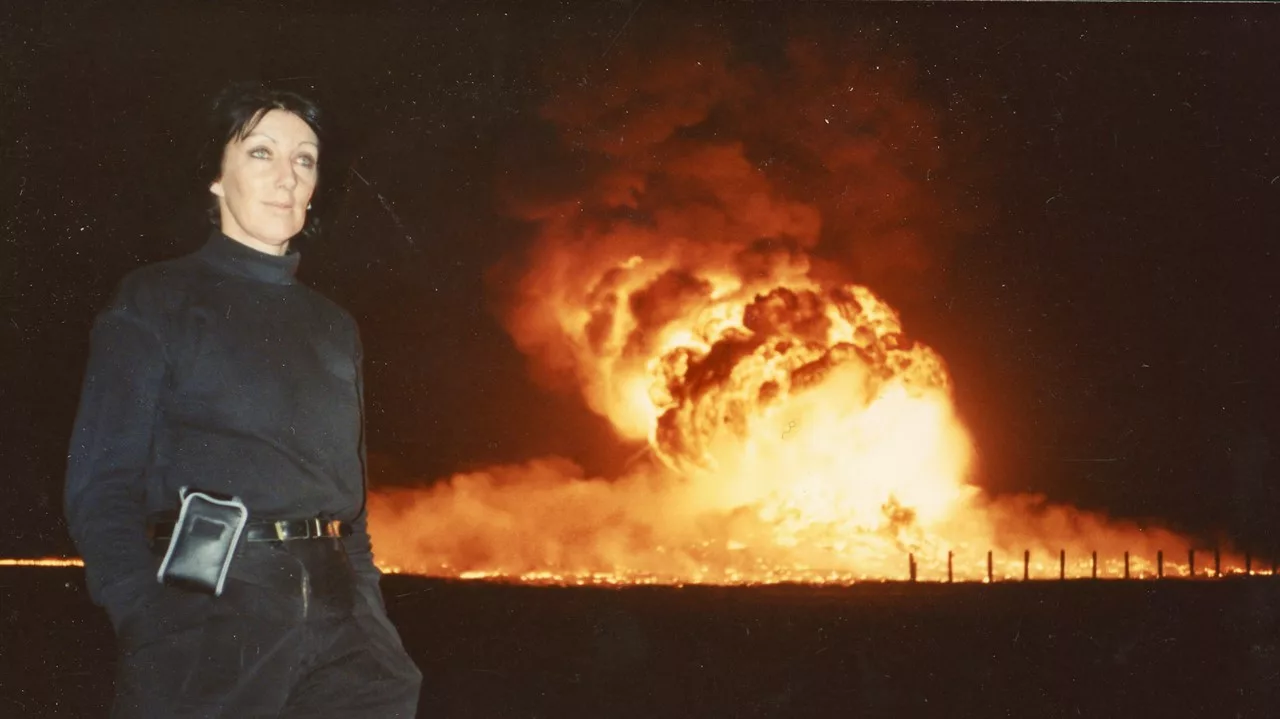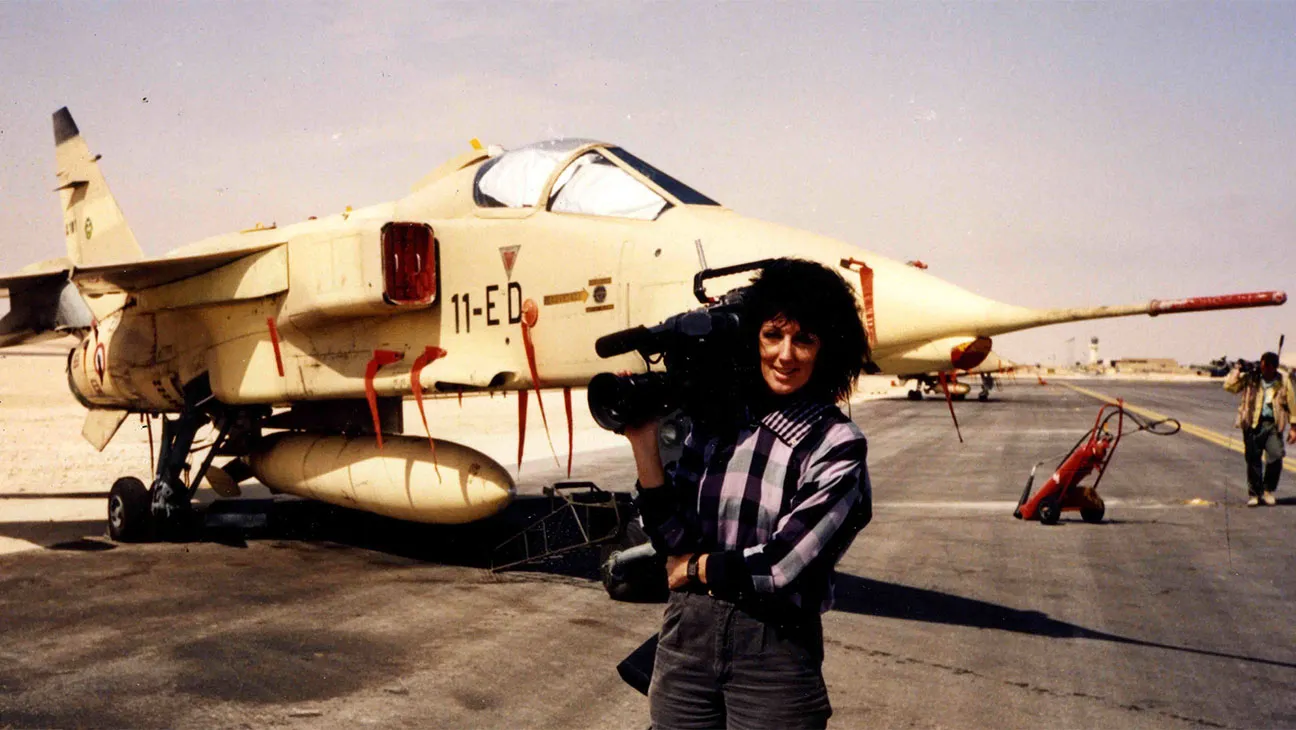Margaret Moth lived her life on the edge, driven by a fierce commitment to bearing witness. As a video journalist, she fearlessly plunged into the world’s most volatile warzones for over two decades, determined to capture the hardest-hitting footage.
But what compelled such a risk-taking existence? Lucy Lawless’ arresting documentary Never Look Away sets out to shine light on the woman behind the camera, delving into Moth’s turbulent origins and unwavering determination to show reality, however raw.
Best known for her lead role in Xena: Warrior Princess, Lawless makes her directorial debut with this in-depth profile. Rather than take a traditional path, she constructs Moth’s narrative by layering poignant interviews and rarely-seen archive material. Through this nuanced approach, a vivid portrait emerges of a complex and captivating figure.
Both trailblazer and tormented soul, Moth pushed limits physically and emotionally, yet kept fighting even when confronted with her gravest challenge. Never Look Away promises to bring this acclaimed but little-known journalist into focus and uncover the sources of her unbelievable grit.
Margaret Moth: Rebellious Spirit of Warzones
Margaret Wilson emerged in a small town in New Zealand, though little marked her path at the start. Born into a working-class family, young Margaret endured challenging times. Harsh treatment from her father left deep scars. As a child, her drawings revealed disturbed visions—terrified figures haunted by monsters both real and imagined. Despite obstacles, Margaret possessed a restless spirit.
Leaving home behind, Margaret washed up in Houston, seeking reinvention. No longer content as Margaret Wilson, she transformed into someone bolder. Margaret Gipsy Moth emerged with jet black hair and a style all her own. Landing work as a camerawoman, the seeds of her future took root. Hurricane coverage around the Gulf prepared her in ways she could not know.
As the political winds changed, so too did Moth’s destiny. When conflict erupted in the Persian Gulf, she found her calling amidst the chaos. As borders closed and bullets flew, most looked away—but not Moth. While others retreated, her camera moved closer to the action. Footage captured the gritty reality that shaped how the world saw those wars.
Moth’s fearlessness made her a star. Impressing the right people at CNN, she gained a post on their frontlines team. Here, her unconventional talents shone through. Colleagues like Christiane Amanpour saw that her daring spirit provided a view no one else could. From Iraq and Bosnia to Rwanda and beyond, Moth braved every hot zone. Death threats meant little to the so-called “Hurricane of the Middle East.”
Now fully in her element amid conflict, Moth lived according to her own rules. Hedonism and adventure fueled her fire. Yet beneath remained the scars of the past, driving her to document history as it unfolded. For Moth, war offered visceral life where all else felt empty. She chased the nearness of mortality, testing how far a rebellious soul could push before fate intervened.
Margaret Moth: Capturing History Through Grit and Nerve
Moth lived the most intense story possible. While other journalists kept a safe distance, she dove headfirst into danger. Getting up close is how Moth felt history deserved to be seen. And her fearless style turned heads at CNN.
Colleagues like Christiane Amanpour were in awe. In Tbilisi, militiamen opened fire on crowds. Others hid behind cars. Not Moth—she stood tall with the camera rolling. The violence played out before her lens in vivid detail.
In Lebanon, clashes escalated between Hezbollah and Israel. As bombs threatened the building housing journalists, most fled downstairs. But not Moth. She held her ground upon the roof, camera steady, hunting for footage others missed. Only sheer luck spared her that night.
Moth believed her work mattered too much to back away. As a woman in a field dominated by men, she shattered expectations at every turn. Moth didn’t merely observe; she inserted herself into the thick of riots and fighting. Her fearlessness won admiration, though others wondered what drove her to court danger.
Underneath beats a complicated soul. Moth found her passion amid the chaos, yet privately faced private torments. A difficult childhood left scars that never fully healed. Later, Moth embraced life with reckless enthusiasm, losing herself in brief romances and shadowy pursuits.
War provided the visceral thrill that none of this could match. Here was a place where Moth seized control, where her nerve decided life or death. Through it all, Moth’s camera caught history as it happened, sharing the crowds’ terrible plight with the world. Her fearless style ensured scenes of crisis played out in full, brutal view—a perspective none could match but Moth alone.
A Life-Changing Moment in Sarajevo
Moth’s courage had taken her into danger’s heart before. But on one fateful day in Sarajevo, even her nerve was tested like never before. Lawless’ film recreates that morning using intricate models to place us by Moth’s side. She rode through a sniper alley as shells exploded nearby. Then a single shot shattered the air.
Moth screamed as fiery agony ripped through her jaw. Blood poured from her mouth as comrades rushed to aid the fallen journalist. For Kotsonis, the horror of seeing Moth’s mangled face has never left him. Yet even in that bleak moment, Moth’s iron will shine through the pain. She refused evacuation until she was assured her crew was safe.
Months of surgery followed. Doctors reconstructed her jaw with wire and grafted skin. Though speech remained slurred, Moth began the long struggle of rehabilitation. Many thought her days of reporting were over. But they didn’t know the strength inside this indomitable woman.
Six months after that day, Moth strode back into Sarajevo. Scars lined her face, but fiercer scars burned in her soul. The shots that tried to silence her voice paradoxically found new fuel for her mission. Where others saw injury, Moth saw opportunity—a chance to show the human cost of war through her own battered form.
Now permanently marked on the outside by the war’s brutality, Moth channeled her inner wounds into reporting with renewed vigor. Though some colleagues advised caution, Moth plunged straight back to the frontlines. There, with a broken jaw and body, she carried on capturing the crises seared into her memory from that day forward.
Moth lived the remainder of her days placing herself at risk, unafraid to face dangers that took her friend’s faces twice over. Her story is a testament to the power of the human spirit to overcome even life’s harshest blows. Though scarred in flesh, Moth’s resolve and genius for telling history as it unfolded remained untouched to the end.
The Challenges of a First-Time Director
Lawless takes on a difficult task with Never Look Away – crafting a compelling documentary as a first-time filmmaker about a subject with such a bold, unconventional life. But many agree that she rises to the challenge. Through gutsy techniques and a real vision, Lawless ensures Moth’s story fascinates from start to finish. Not least because she grasps what made Moth such a one-of-a-kind figure.
Interviews offer key insights, like those with Moth’s past partners revealing her freewheeling nature. But reenactments especially bring alive Moth’s daring acts of war reporting that others struggled to put on screen. Model recreations place us right by her side in Sniper Alley or atop that bombed building, experiencing her bravery through visceral visuals.
Still, some note that the film feels a touch uneven. Dense first sections bombard with tales of Moth’s personal exploits, leaving her professional genius less clear. And the aftermath of Moth’s injury arguably could have carried more weight, delving deeper into her recovery.
The film also draws some criticism for relying on male perspectives at times more than was needed. While their glimpses into Moth hold merit, amplifying powerful women like Amanpour could have balanced the narrative better.
Yet for all a rookie director may stumble, Never Look Away stays true to Moth as a subject. Lawless honors her fearlessness and refusal to be limited, keeping Moth’s spirit front and center. And she smartly lets nothing overshadow the images from Moth’s lens, perhaps her most stirring testimony.
So, while not a perfect retelling, Lawless launches her career with a film done right by an unsung hero. She illustrates clearly why Margaret Moth forever changed her field through guts and genius alone. It is an admirable start for any storyteller, but especially one directing their first feature with such a defiant role model as their muse. Moth could not have asked for a truer tribute.
Truth in the Line of Fire
Lawless crafts Moth’s story at a moment when her experiences shine a new light. Watching scenes of Moth up close to war’s worst violence, it’s shocking how little has changed. Journalists still risk their lives to bear witness, from Syria to Ukraine.
Like Moth staring down snipers’ sights, reporters today face active targeting. Their missions are no less vital—to show the public the realities no army wants to see. It’s a sobering parallel, and one Moth knew well. She knew that if truth-tellers shied from danger, atrocities would unfold unseen.
Moth also blazed a trail that was less tangible but no less impactful. As one of the few female videojournalists of her time, she proved nothing could stop a woman from pursuing the truth. Her ferocity in the field inspired others, and her career paved the way for more representation behind the camera today.
Though Never Look Away celebrates Moth’s courage, it doesn’t shy away from examining war reporting’s human toll. Moth’s injuries and those around her impacted by trauma show high personal costs. And the film leaves us pondering whether exposure to so much suffering impacted Moth herself.
She never stopped her missions, yet she continued chasing risks even where cameras weren’t present. By balancing admiration with honest questions, Lawless creates no simple heroes but a rich, complex legacy. Most of all, she ensures Moth’s memory emphasizes what truly matters: bearing witness and demanding our leaders and public never forget humanity’s costs when wars are forgotten.
Capturing Courage for the Ages
The film comes full circle in how it began—with Margaret Moth in the field, camera in hand, as close as possible to history as it happened. Never Look Away sees Moth to the end, though her impact is far from over. Through two decades of clashes filmed with fearless resolve, she bore witness when others couldn’t stand to watch. In doing so, Moth shone light where many wished for darkness, ensuring the violence she recorded could not be forgotten or denied.
Lucy Lawless’ film ensures this role, and the woman enters the light permanently. By painting Moth in all her complexity—cousin yet troubled, dedicated yet reckless—lawless crafts not just a tribute but a truth. Her interviews confront Moth’s demons head-on while celebrating a spirit that would not break, even when her own body was broken. And through recreating tense episodes almost lost to time, Never Look Away brings Moth’s border-defying work to new eyes.
Though cameras have advanced since Moth’s days, the threats to those behind them have not changed. As long as leaders still wish to shroud war’s realities, we need figures like Moth to challenge the shadows. In gifting her story such nuanced treatment, Lawless has paid Moth’s efforts forward in a way few could. Her film, which ensures an unconventional life lived without pause for risk or reward, will stay with its audience long after the last frame. For a life cut too short, it is a legacy one can never look away from.
The Review
Never Look Away
Lucy Lawless' directorial debut, Never Look Away tells the riveting story of trailblazing war correspondent Margaret Moth through a nuanced, artfully crafted lens. Despite some minor unevenness, Lawless' film ultimately succeeds in bringing Moth's one-of-a-kind life experience and invaluable journalistic contributions vividly to screen through compelling archival imagery, gripping recreations, and heartfelt first-hand testimonies. Never Look Away pays moving tribute to a fearless truth-teller while reminding us of the ongoing importance of bearing close witness to history, no matter the personal cost.
PROS
- A compelling subject for trailblazing journalist Margaret Moth
- Artful blending of archival footage and reenactments
- A nuanced portrayal of Moth's personal and professional life
- Timely themes around the risks faced by conflict journalists
- Strong performances from interview subjects
CONS
- Some uneven pacing in the first half
- Could have explored Moth's post-injury life more.
- Over-reliance on songs in the soundtrack at times























































Discussion about this post